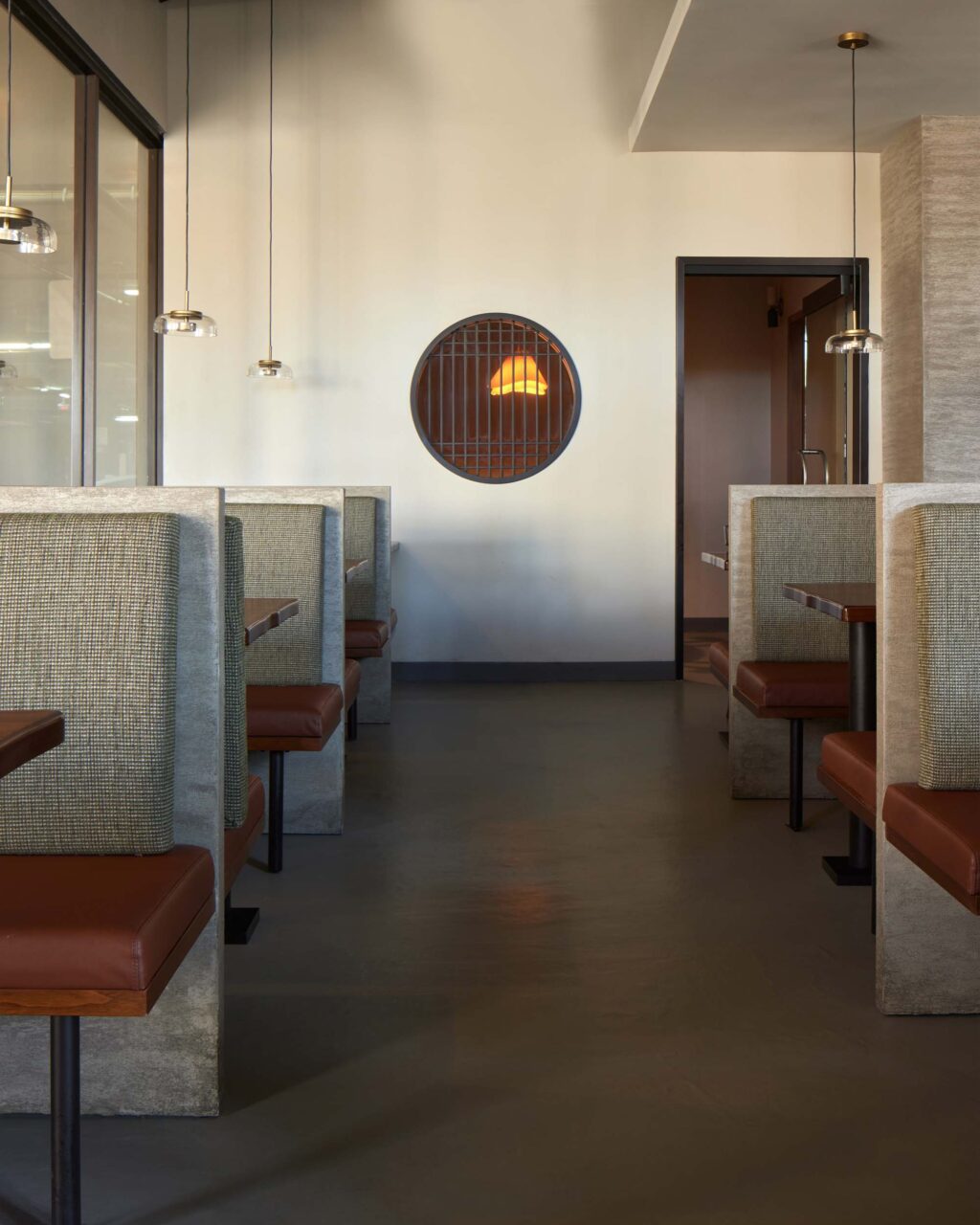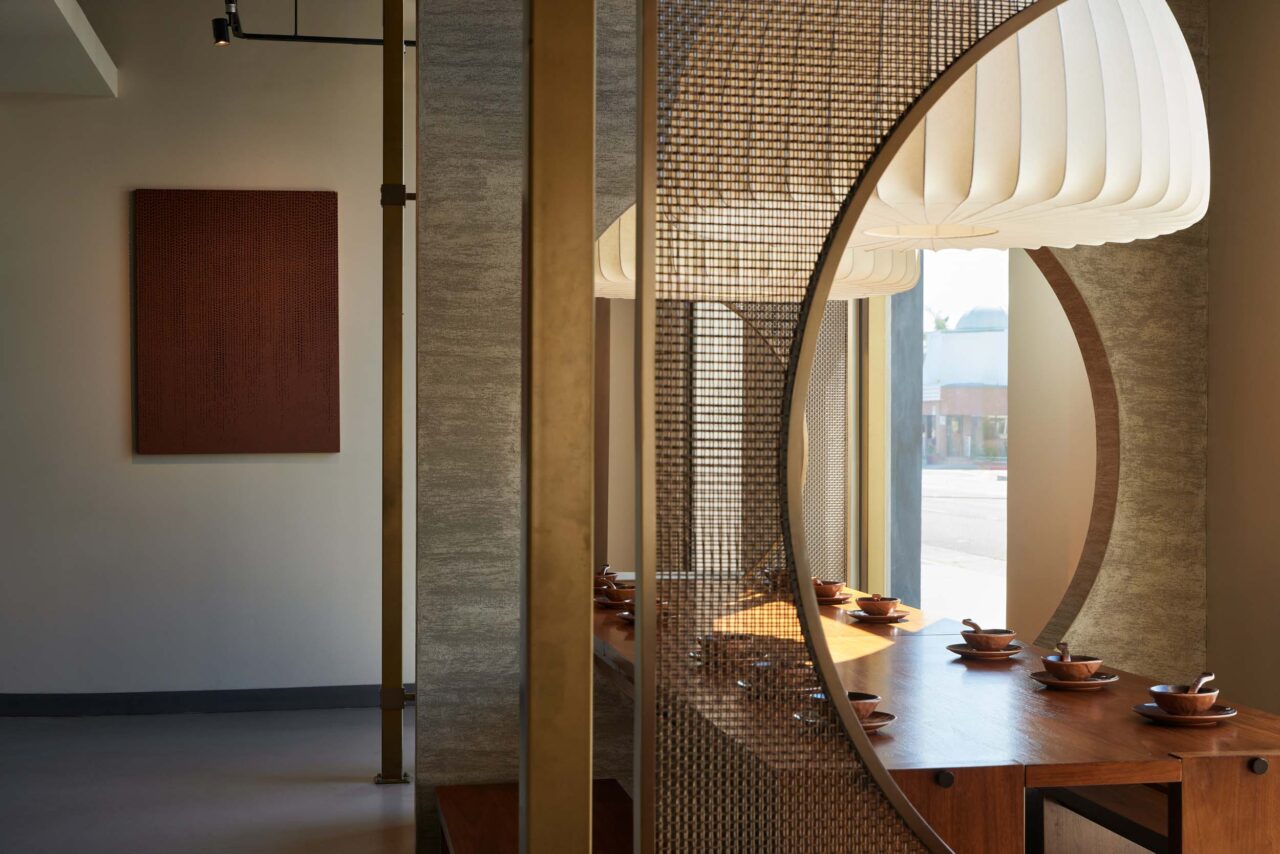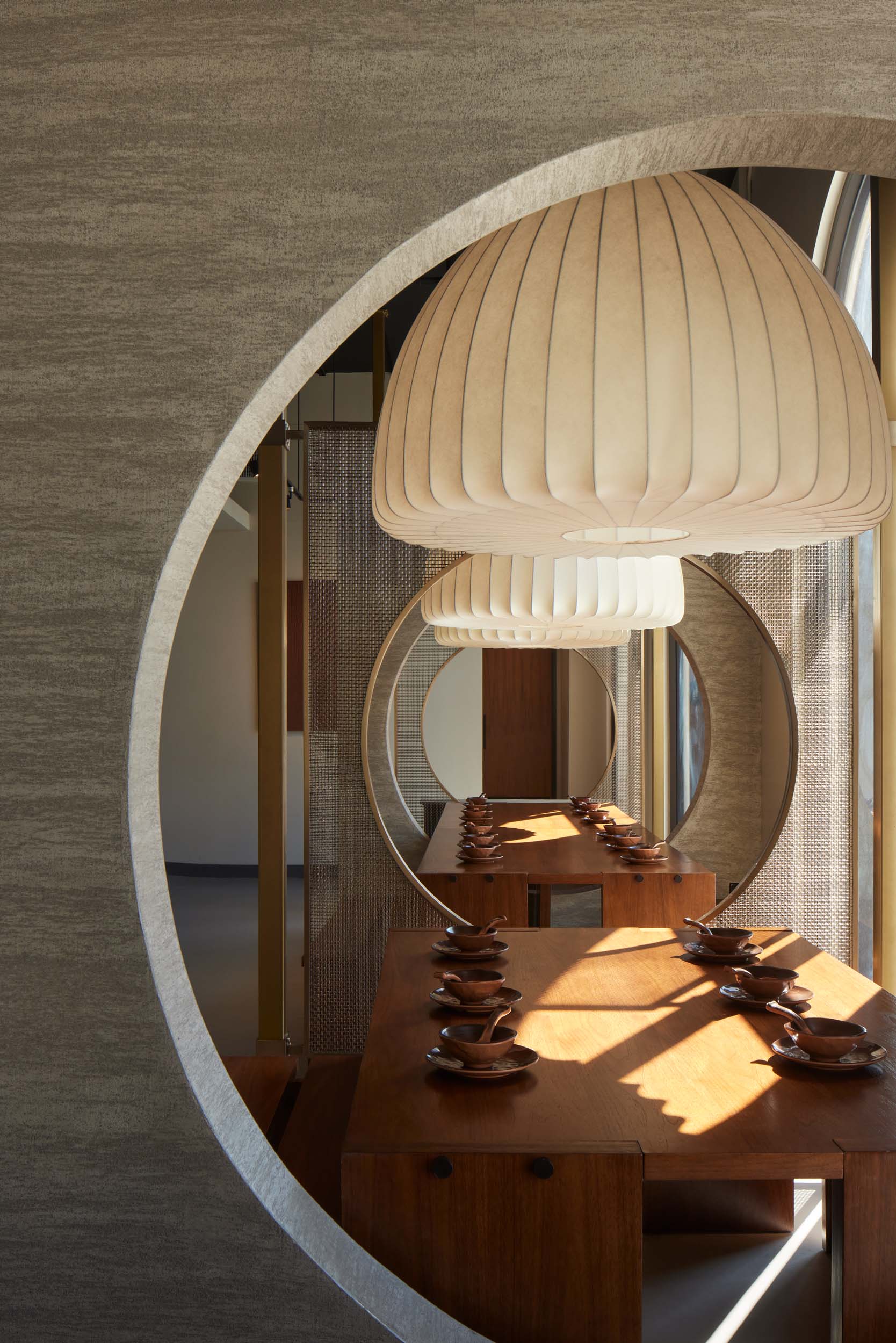Neither fully Chinese nor American, traditional nor modern, the latest Alhambra, California, outpost for Chinese restaurant Sichuan Impression is a mediation in duality. Los Angeles–based interior architect and furniture designer Jialun Xiong, who hails from Chongqing, China, pays homage to Chinese architecture while situating it firmly within the present. In the 2,000-square-foot space, the architect melds cultures and temporalities into a precise and quiet environment.


The eatery can be divided into four seating zones. The first of which is the most gripping: a row of tables along the street-facing windows delineated by circular plaster partitions. Here the emerging designer plays with negative and positive space, lining up the round portals with which to see through only to subvert the pattern of empty space with a larger table passing through the partition. Above each table, a custom oversized raw silk cloth chandelier is sandwiched between plaster and metal mesh dividers. Its shape and material, undercut by thin metal strips, is a nod to traditional Chinese design but with a twist.

While the color scheme of the eatery is mostly neutral, other hues appear with careful cultural consideration. In the second zone, Xiong designed eight banquettes finished with muted green upholstery, a shade that alludes to bamboo. They’re paired with live-edge walnut tables whose red undertone aligns with what is traditionally believed to be an auspicious color.
A drop ceiling imbues the seating area with a sense of intimacy. The banquettes end at the half-height plaster dividers with free standing seating on its opposite side. On this end, warm tones contrast from the gray plaster: gold metal cabinets float on the wall, adjacent to the yellow lighting above the bar.

The final seating zone lies at the back of the restaurant in the private dining area. Hidden from the main room, the space, featuring a circular table and more delicate lighting, seats 16 or two groups of 8 when the sliding wood door is closed. Like the space overall, the area is captured in frames, this time by a circular, bronze-paned window, a motif not unfamiliar to China.
Bridging rustic materials with modern accents, Xiong’s design is neither wholly Chinese nor Californian. It lingers somewhere in between, a gesture towards a Chinese American style.
